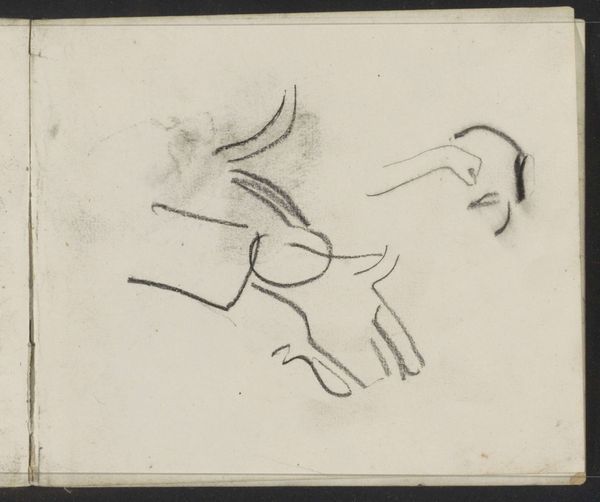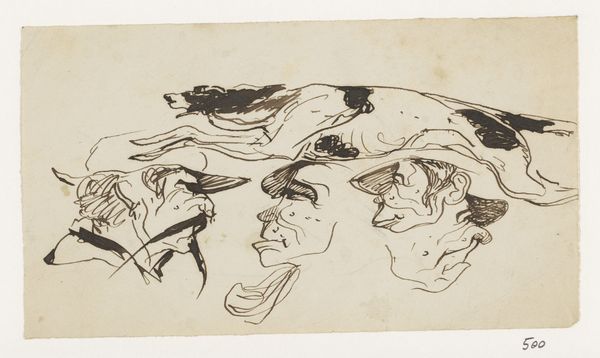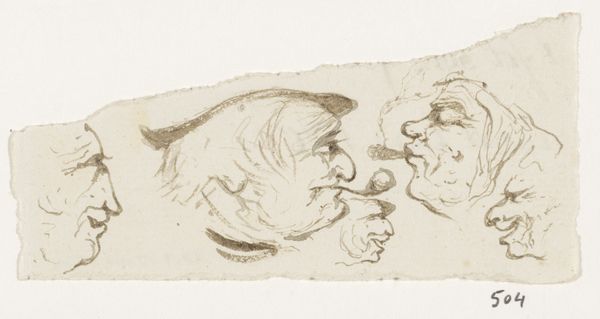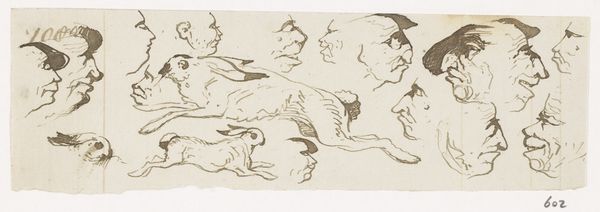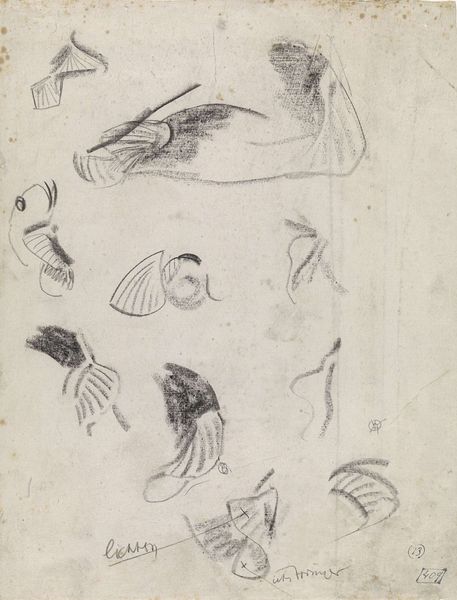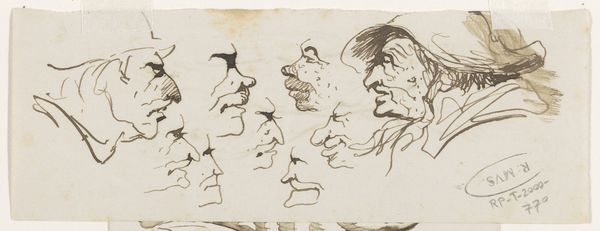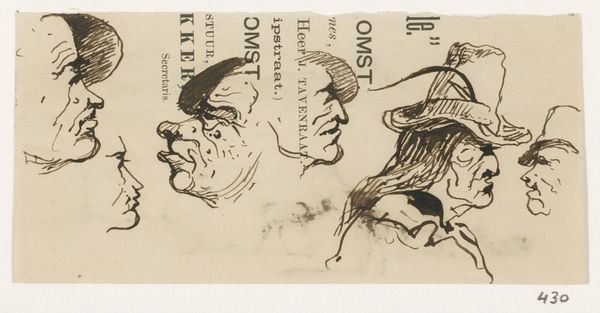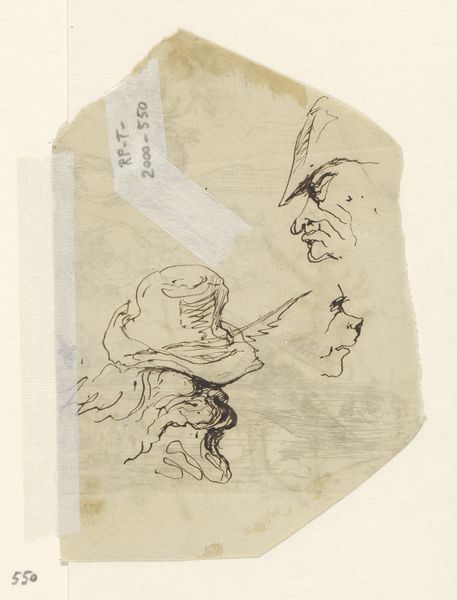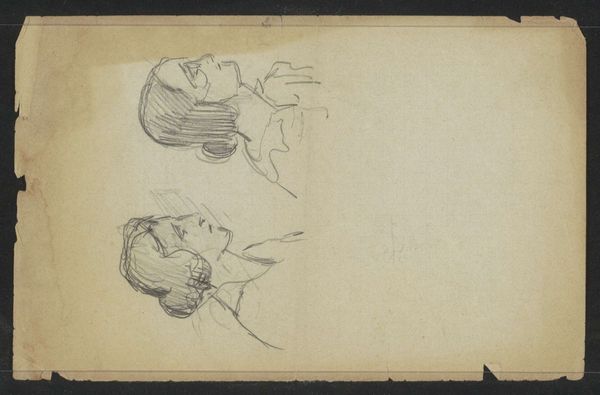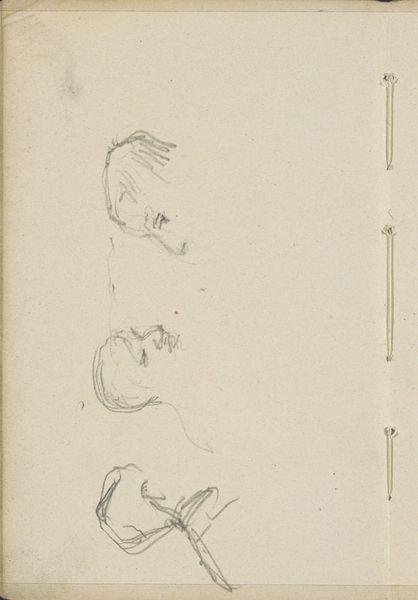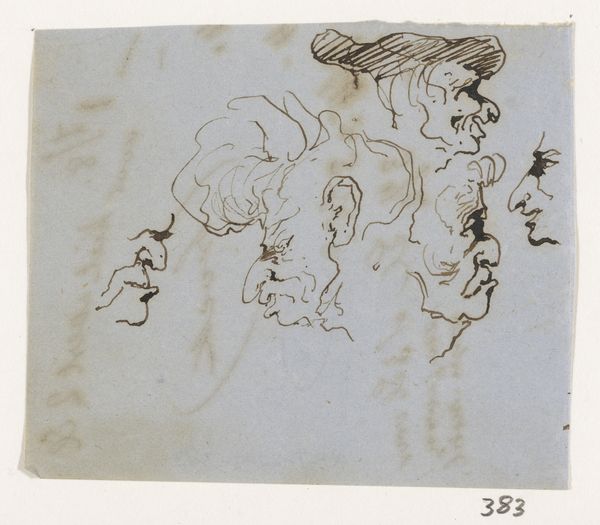
drawing, paper, ink
#
portrait
#
drawing
#
pencil sketch
#
etching
#
paper
#
ink
#
line
#
academic-art
#
watercolor
#
realism
Dimensions: height 42 mm, width 138 mm
Copyright: Rijks Museum: Open Domain
Curator: This is "Koppen," a drawing created between 1840 and 1880 by Johannes Tavenraat. It's currently held here at the Rijksmuseum. Editor: My first impression is how quickly these profiles seem to have been rendered; they evoke a sense of the fleeting moment, of catching a glimpse rather than meticulously portraying a sitter. Curator: Absolutely. Consider the materials: ink and paper. These suggest immediacy and accessibility in artistic production. It invites reflection on the means and circumstances under which Tavenraat sketched these portraits. What purpose did these serve beyond the purely aesthetic? Editor: They feel like studies. The varying levels of detail imply he was perhaps experimenting with techniques to capture likeness efficiently. It makes me consider the context in which academic art was situated: Were these models from the local populace? And if so, how did their social standing impact their representation, and subsequently, our interpretation? Curator: Exactly. Think about artistic training during this period; artists often honed their skills by drawing from life, practicing anatomical accuracy and realistic representation. The paper, the ink, they represent tangible aspects of that labor. How are these drawings disseminated, valued, and consumed within a society increasingly interested in portraits that reflect identity? Editor: Looking closely at the varying depictions—from almost skeletal features in the first to increasingly individualized renderings toward the right—I wonder about the sociopolitical atmosphere of the time. This work captures a tension, in the burgeoning era of scientific racism, of striving for objectivity in observing likeness alongside ingrained social biases in perceiving value and identity. Curator: It underscores the crucial point about labor—artistic labor—embedded in even a seemingly quick sketch. The choices of materials, the selection of subjects, are all part of a larger network of production and consumption within the 19th century art world. Editor: It leaves me thinking about the stories absent from the visible lines; Whose gazes eluded capture, whose likeness deemed unimportant by an establishment? Who holds the authority to define and document “identity?” Curator: It's a powerful reminder of the importance of material culture in understanding artistic creation. Editor: Indeed. These profiles urge us to ponder on portraiture as it relates to individual and societal constructs of the time.
Comments
No comments
Be the first to comment and join the conversation on the ultimate creative platform.
